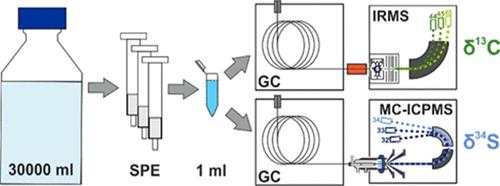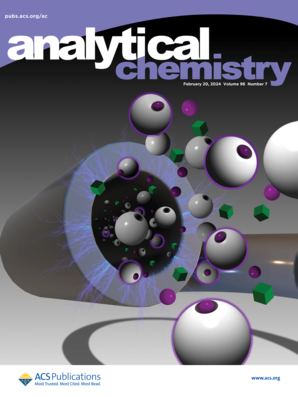Development of a δ13C and δ34S Isotope Analysis Method for Sulfadimidine and Its Potential to Trace Contaminant Transformation in Groundwater Systems
IF 6.7
1区 化学
Q1 CHEMISTRY, ANALYTICAL
引用次数: 0
Abstract
The widespread occurrence of micropollutants like the antibiotic sulfadimidine in the environment has become a growing concern. Compound-specific stable isotope analysis (CSIA) offers a powerful tool for tracking the fate of such pollutants, but its application is often limited by low sensitivity. To address this limitation, a large-scale solid-phase extraction method was developed to extract, enrich, and isolate sulfadimidine for δ13C- and δ34S-CSIA. Each step of the method was carefully evaluated, ensuring no detectable isotope artifacts. The limit of quantification was determined as 1.1 nmol of carbon and 1.2 nmol of sulfur directly injected on the column. Applied to groundwater samples from a contaminated site in Denmark, the method allowed for the analysis of concentrations as low as 0.17 mg/L, with a concentration factor of up to 10,000 used to enrich sulfadimidine. This is the first study to analyze δ13C and δ34S for sulfadimidine in aquifer water samples and highlights the potential of CSIA for tracking sulfadimidine transformations in contaminated water environments.

求助全文
约1分钟内获得全文
求助全文
来源期刊

Analytical Chemistry
化学-分析化学
CiteScore
12.10
自引率
12.20%
发文量
1949
审稿时长
1.4 months
期刊介绍:
Analytical Chemistry, a peer-reviewed research journal, focuses on disseminating new and original knowledge across all branches of analytical chemistry. Fundamental articles may explore general principles of chemical measurement science and need not directly address existing or potential analytical methodology. They can be entirely theoretical or report experimental results. Contributions may cover various phases of analytical operations, including sampling, bioanalysis, electrochemistry, mass spectrometry, microscale and nanoscale systems, environmental analysis, separations, spectroscopy, chemical reactions and selectivity, instrumentation, imaging, surface analysis, and data processing. Papers discussing known analytical methods should present a significant, original application of the method, a notable improvement, or results on an important analyte.
 求助内容:
求助内容: 应助结果提醒方式:
应助结果提醒方式:


